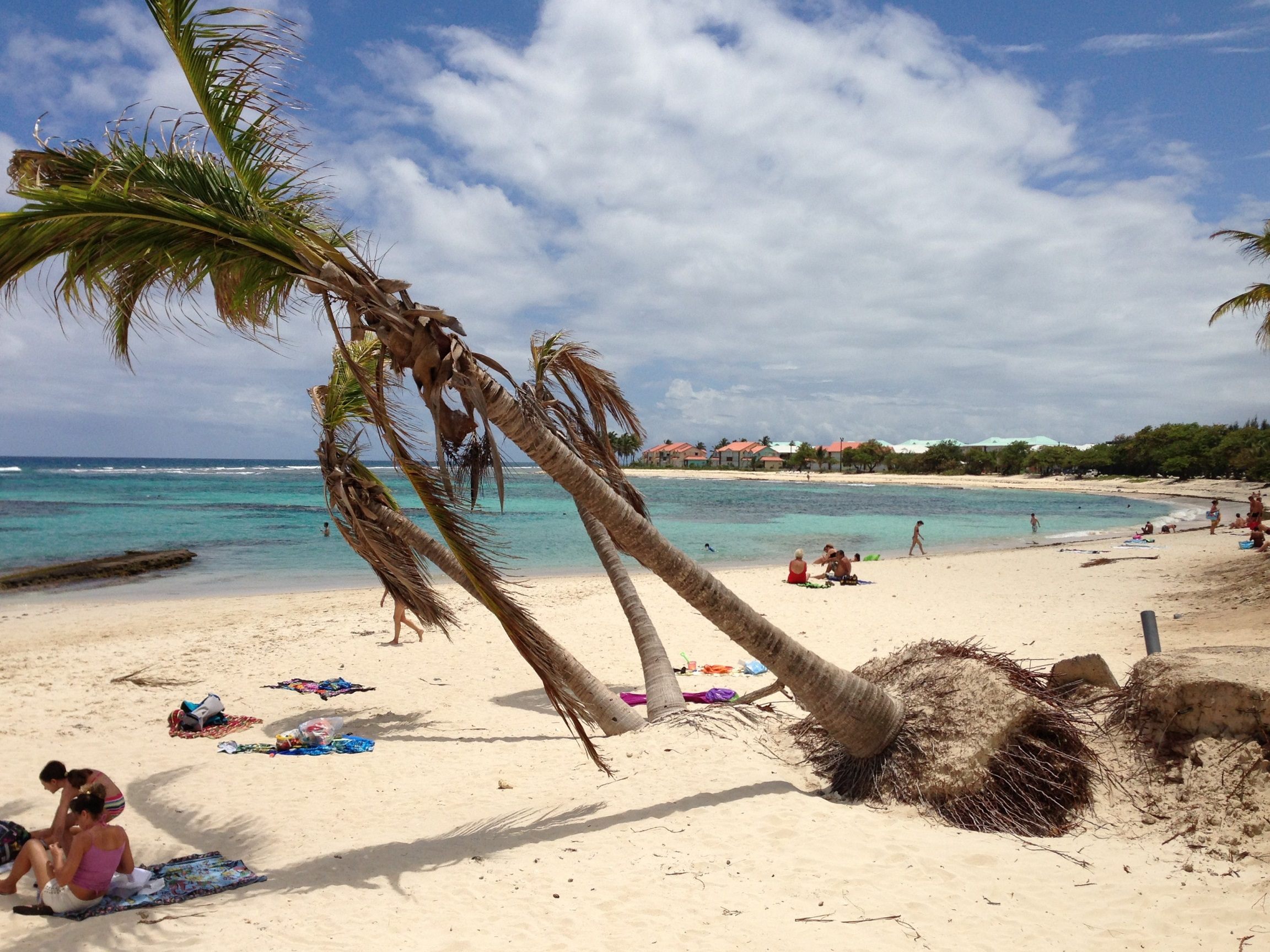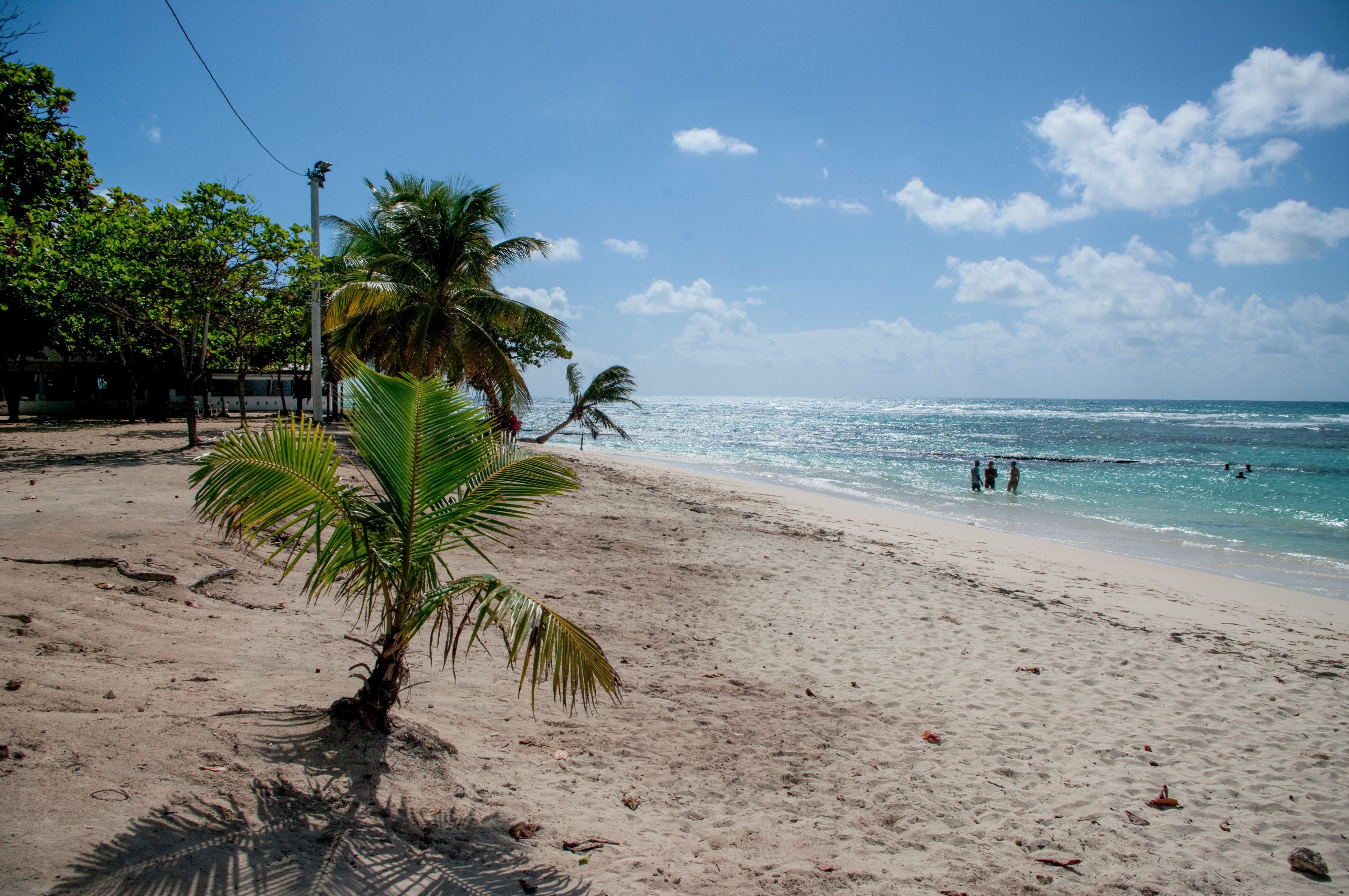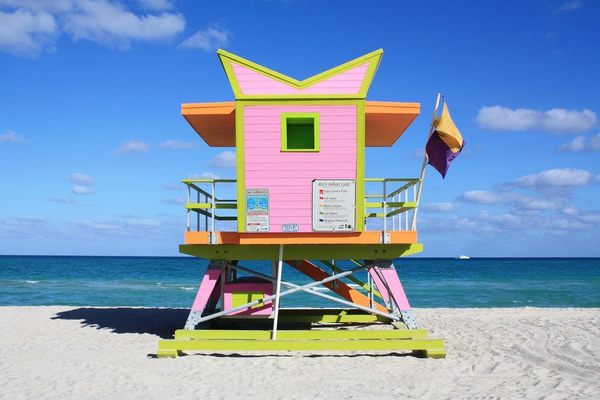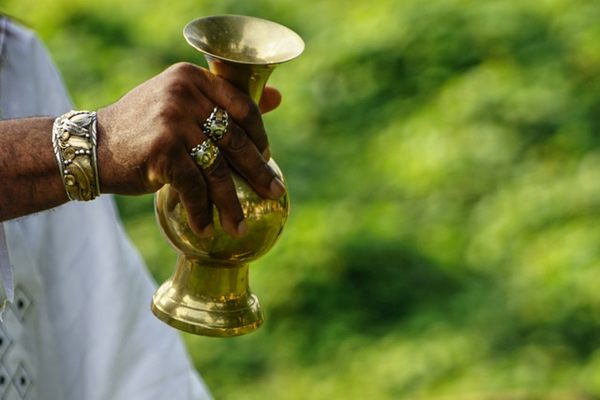The Politics of Sunbathing on Human Remains
Or, what happened after a slave cemetery was discovered under a beautiful beach in Saint François, Guadeloupe.

Most people don’t go to the beach expecting to find human remains in the sand, but that’s exactly what happens relatively frequently at Raisins Clairs Beach in Saint François, Guadeloupe. Over the past few decades, beachgoers have found bones, teeth, skulls, coffin nails, and, in the 1990s, even a metal bondage collar. It wasn’t until 2013, however, when a large storm surge washed away many meters of the shore, that a likely slave cemetery containing 500 to 1,000 graves was discovered.
Between 2013 and 2014, Guadeloupe’s Department of Cultural Affairs and its National Institute for Preventive Archaeological Research launched two rounds of excavations at this otherwise tourist-friendly beach. Among the discoveries was a male human jaw containing incisors that had been sharpened into points, a clue to the deceased’s origins being African. They also unearthed signs that the bodies had been buried between the 18th and 19th centuries, further indicating that this site had once been used as a place to bury slaves.
Dominique Bonnissent, regional conservator of the Archaeological Prefecture Department of the Guadeloupe Region of France, tells Atlas Obscura that once the teams determined that the site housed the remains of slaves, no future excavations were planned. “It was the will of the community,” she said, “to preserve this emblematic cemetery.”

What should be done, though, with the human remains and artifacts that had already been excavated? Some people in the community hoped that the nearby Edgar Clerc Archaeological Museum, which specializes in the pre-Columbian history of the Caribbean, or the Memorial ACTe, a slavery museum and memorial that opened in 2015, might be able to house them permanently. Yet according to Bonnissent, neither location had the capacity to properly store archeological artifacts, so instead, the state created a new archeological depository specifically for these remains.

In the midst of making these sensitive decisions, another large storm hit Guadeloupe in 2015, sweeping away more of the beach. Images soon circulated on social media that showed more bones than ever poking through the sand, and many locals were alarmed. In November of the same year, Joël Nankin, an artist living in the area, mobilized a group to take action.
Under pressure from these locals, many of whom formed an association called Silence and Oblivion, in 2015 the government installed an anti-storm surge system at Raisins Clairs, and Bonnissent says erosion is no longer an issue. “There are no more visible bones because they’ve been protected by geotextile formwork,” she says. Sand has also been brought in to refill what was washed away, and Bonnissent suggests that remaining graves are now “protected from swells and trampling by visitors.”
Geotextile formwork is a flexible, cost effective, and durable in situ solution, and for now it will likely protect the cemetery against most storms. Climate change has, however, increased the number and severity of storms throughout the Caribbean, and no formwork is failure-proof.
In 2016, Silence and Oblivion helped to organize Bòdlanmè pa lwen on Raisins Clairs. During this round table event, about 50 public authorities, archeologists, and community members came together to discuss the issues surrounding the cemetery and the development of a memorial project. For the most part, say participants, the conversations have been congenial and solution-oriented, and the government and community have found ways to work together.

Tourists and locals alike still frequent Raisin Clairs, and on most days the white stretch of beach is filled with people swimming, sunbathing, or dozing in the shade beneath seaside raisiniers, a species of tree that grows along this shore bearing fruit that resembles grapes. Food trucks operate just off the beach, and there’s even a restaurant where beachgoers can enjoy locally caught seafood while taking in gorgeous views of the ocean.
The cemetery is now marked by two signs indicating its location. Still, despite efforts to respect and defend the space, it’s likely that future storms will continue to churn up bones, teeth, and other culturally important artifacts. Beachgoers should not only take care where they throw down their blankets—they may also want to take a moment of silence for the dead.














Follow us on Twitter to get the latest on the world's hidden wonders.
Like us on Facebook to get the latest on the world's hidden wonders.
Follow us on Twitter Like us on Facebook